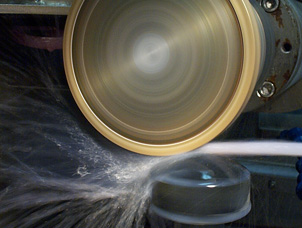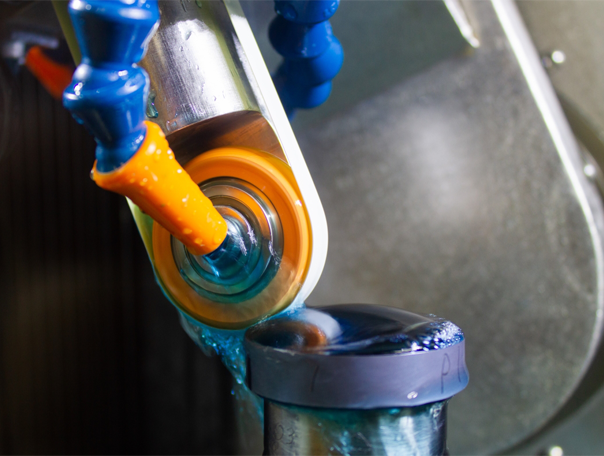 Mineral deposits in your fluid delivery lines? Unsightly pungent residues in the sump? Decreased grinding fluid performance? Excessive corrosion? Maybe it’s time your water quality was evaluated. Here we revisit a series of articles by Birgit Gilman (formerly Puchebner) of the Center for Optics Manufacturing (COM) dated 1994-1995 with updated experimental results.
Mineral deposits in your fluid delivery lines? Unsightly pungent residues in the sump? Decreased grinding fluid performance? Excessive corrosion? Maybe it’s time your water quality was evaluated. Here we revisit a series of articles by Birgit Gilman (formerly Puchebner) of the Center for Optics Manufacturing (COM) dated 1994-1995 with updated experimental results.
Coolants contain ~90% water, with the remainder containing commercial additives to prevent from corrosion, foaming, and bacterial growth [1]. However, while the quality of these additives is precisely controlled by the coolant manufacturers, the water quality varies depending on its source. Therefore, your water quality should be monitored before diluting the concentrated coolant.
Factors that affect water quality are water hardness, pH, and the presence of chlorides, sulfates, and lead [2]. Generally speaking, hard water is the amount of calcium and magnesium salts, expressed in milligrams of calcium carbonate (CaCO3) per liter of water (ppm). The ideal hardness levels for glass working coolant are between 80 to 110 ppm. Water with hardness value below 70 ppm is considered soft and may result in foaming whereas hardness value that exceeds 200 ppm is consider hard. A pH of 7 is defined as natural. Water below pH 7 is acidic, above pH 7 is basic. Most commercially available coolants are basic in their concentrated form with pH levels between 9 and 12. Once diluted the pH slightly drops. Monitoring the pH level can identify bacterial growth. Additional ions such as chloride or sulfate will degrade the coolant performance. The chloride content should be less than 75 ppm. Above this concentration may result in corrosion. Sulfates promote corrosion and the growth of sulfate-reducing bacteria, resulting with a “rotten egg” smell if concentration exceeds 50 ppm. Lead is mostly a health concern and should not exceed 15 ppm. In addition to the above, water conductivity (micro Siemens per unit volume) and total dissolved solids (TDS, parts per billion by weight) indicate the ability to conduct electrical current as the ionic concentration increases. TDS is directly proportional to conductivity. Therefore, high conductivity and TDS levels may cause corrosion as well as solids residue in the coolant delivery system.
The table below summarizes preliminary results for water quality tests of the tap water at OptiPro’s facility as well as the water from one of OptiPro’s customers compared to the recommended limits and past test done at COM in 1994. The tests at OptiPro were done using a standard water quality test kit purchased from McMaster Carr.
Table 1: summary of water quality tests
| Analyzed for | Recommended limit | COM (1994) | Actual OptiPro tap water results | OptiPro’s customer (extreme conditions) | Exceeding limits can cause |
|---|---|---|---|---|---|
| Hardness (ppm as CaCO3) | <110 | 91.3 | 120 | 425 | corrosion, residues, increased bacterial growth |
| Chlorides (ppm) | <75 | 23.1 | <1 | >100 | corrosion corrosion, growth of sulfate-reducing bacterial (rotten egg smell) |
| Sulfates (ppm) | <50 | 18.2 | |||
| Lead (ppm) | 15 | <1 | lead poisoning if ingested | ||
| Conductivity | <500 | 245 | |||
| (kSiemens/ cm2) pH | 6-to 8 | 6.9 | 7.35 | 7.01 | residues, corrosion |




